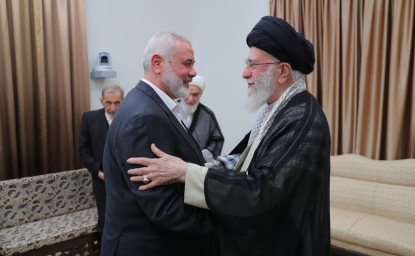By Cameron Glenn
Al Qaeda and ISIS – also known as ISIL, the Islamic State, or Daesh (in Arabic) – are both violent extremist groups propagating a hardline Islamist ideology. But they are rivals who differ in their strategy to achieve the same objectives. For more than two decades, al Qaeda was the dominant worldwide jihadist organization. In 2014, it began to face a challenge from ISIS, which declared the creation of an Islamic State after seizing large swaths of Iraq and Syria. ISIS quickly achieved what had been al Qaeda’s longtime goal – establishing a global caliphate.
Al Qaeda emerged from networks of jihadist fighters who flocked to Afghanistan to fight the Soviet invasion in the 1980s. Al Qaeda seeks to establish a caliphate, but only as a long-term goal. Its strategy has focused on high-profile attacks against Western targets rather than conquering territory. “If our state is not supported by the proper foundations…the enemy will easily destroy it,” former al Qaeda leader Osama bin Laden wrote in 2010.
ISIS emerged from the remnants of al Qaeda in Iraq, but severed ties with al Qaeda in 2014 as it captured territory. ISIS has conducted brutal sectarian attacks and, unlike al Qaeda, actively seeks to conquer and rule territory. A 2014 ISIS publication claimed the group is “now opposed by the present leadership of famous jihad groups who have become frozen in the [attack] phase…considering the attainment of power to be taboo or destructive.”
Both al Qaeda and ISIS have global franchises that extend across Asia and Africa. Several jihadist groups began declaring allegiance to ISIS in 2014, while others reaffirmed their support for al Qaeda. With the rise of ISIS, the affiliations are not always straightforward. Some members of al Qaeda in the Arabian Peninsula (AQAP) – one of al Qaeda’s strongest branches – have expressed support for ISIS. The two are battling for dominance of the global jihadist movement.
Origins
Osama bin Laden (left) formed al Qaeda in the late 1980s from jihadist groups based in Central Asia. It was held responsible for the 1998 bombings of the U.S. embassies in Kenya and Tanzania, the 2000 bombing of the USS Cole and the September 11 bombings of the World Trade Center and the Pentagon in 2001. After the 9/11 attacks, U.S. forces invaded Afghanistan, weakening al Qaeda by capturing and killing many of its core members. By 2013, U.S. officials estimated that only 50-100 al Qaeda members remained in Afghanistan.
During the 2000s, al Qaeda evolved into a vast network of formal affiliates and informal allies. One of the affiliates was al Qaeda in Iraq, the predecessor of ISIS. It was founded in 2004 under Abu Musab al Zarqawi. It was rebranded as the Islamic State in Iraq in 2006. The surge of U.S. troops in Iraq in 2007 drove the group from its strongholds; many of its core members were killed or imprisoned.
In 2011, al Qaeda faced a major setback with the death of Osama bin Laden. Ayman al Zawahiri took over the group’s leadership. At the same time, the Islamic State of Iraq took advantage of the growing unrest in Syria by dispatching fighters to Idlib, Aleppo, and Deir Ezzor.
The Islamic State of Iraq changed its name to the Islamic State of Iraq and Syria (ISIS) in 2013 and began capturing Iraqi territory. By January 2014, the group had established a de facto capital in Raqqa, Syria.
Tensions were steadily mounting between ISIS and al Qaeda. ISIS leaders repeatedly ignored commands and authority from al Qaeda’s core leadership. In February 2014, al Qaeda leader Zawahiri officially severed ties with ISIS. “ISIS isn’t a branch of al Qaeda and we have no organizational relationship with it,” Zawahiri said. “Nor is al Qaeda responsible for its actions and behavior.” In Syria, the tensions played out on the battlefield. In 2013, ISIS had begun began battling the Nusra Front – al Qaeda’s affiliate in Syria – for dominance. By March 2014, over 3,000 fighters had been killed in battles between ISIS and the Nusra Front.
In June 2014, ISIS leader Abu Bakr al Baghdadi formally proclaimed the Islamic State carved out of northern Syria and Iraq. It stretched from Aleppo in Syria to Diyala in Iraq. ISIS established a basic bureaucracy in its territories, with institutions based on its hardline interpretation of Islam.
Although the two groups reportedly considered joining forces in late 2014, Nusra leader Abu Mohammed al Julani emphasized in 2015 that the groups remained at odds with no immediate plans to reconcile. In a recording released in September 2015, Zawahiri reiterated that he considered the ISIS caliphate illegitimate. But he also called for cooperation between al Qaeda and ISIS "to push back the attack of the enemies of Islam."
Global Reach
Al Qaeda: Between 10,000 and 20,000 jihadists have been trained in al Qaeda camps in Afghanistan since the 1980s, but thousands of fighters have been killed or captured since the United States ramped up counterterrorism operations against the group in the 2000s. But the number of active al Qaeda followers today is difficult to quantify.
The group established a number of regional affiliates in the 2000s. The affiliates, over whom Zawahiri claims authority, include:
- Al Qaeda in the Arabian Peninsula, based in Yemen, with around 1,000 fighters
- Al Qaeda in the Islamic Maghreb, based in Algeria, with less than 1,000 members
- Al Shabaab, based in Somalia, with at least 2,000 fighters
- The Nusra Front, based in Syria, with at least 5,000 fighters
- Jamaah Islamiyah, based in Indonesia, with fewer than 400 fighters
- Al Qaeda in the Indian Subcontinent, based in India, with around 300 fighters
Other small jihadist groups have been inspired by al Qaeda’s ideology since 2001, but not all are formally affiliated. At least 45 jihadist groups worldwide – 32 of which have only been active since 2001 – have some degree of coordination with al Qaeda, according to IntelCenter.
In the chaos of civil war, al-Qaeda groups in Yemen and Syria expand territory, influence http://t.co/4vUBGxjWOu pic.twitter.com/pQDqK8sfJG
— Post Graphics (@PostGraphics) June 5, 2015
ISIS: ISIS membership has grown rapidly since 2011, and in late 2014 the Central Intelligence Agency estimated that ISIS had up to 31,500 fighters. By January 2015, roughly 20,000 of these fighters were thought to have originated from outside Iraq and Syria.
In 2014, a handful of jihadist groups around the world began aligning with ISIS. By mid-2015, more than 30 jihadist groups had either pledged allegiance to ISIS or declared support for it. These groups included:
- Ansar Beit al Maqdis, based in Egypt’s Sinai peninsula
- The Shura Council of Islamic Youth, based in eastern Libya
- Jund al Khilafah, an AQIM splinter group based in Algeria
- Khorasan Province, based in Afghanistan and Pakistan under the leadership of former Taliban commander Hafiz Said Khan
- Boko Haram, based in Nigeria, with around 9,000 fighters
- Sanaa Province, based in Yemen
Smaller groups in Jordan, the Caucuses, Indonesia, the Philippines, and Nigeria have also expressed support for ISIS, but Baghdadi has not declared all of them formal ISIS provinces. Some groups, like Boko Haram and Ansar Beit al Maqdis, are known to have collaborated with al Qaeda in the past, before aligning with ISIS.
U.S. to expand support in Kenya, Somalia for counterterrorism http://t.co/n0Qv6rxait pic.twitter.com/QWZoxY5ySE
— Post Graphics (@PostGraphics) July 26, 2015
Photo credits: Osama bin Laden via Wikimedia Commons, ISIS flag via Wikimedia Commons
Author

The Islamists
Learn more about Hamas and how it relates to similarly aligned organizations throughout the region. Read more

Explore More
Browse Insights & Analysis
Israel Escalates Attacks in Gaza: What’s Next?

Israel Expands Operations on Multiple Fronts: Perspectives on the Conflict

